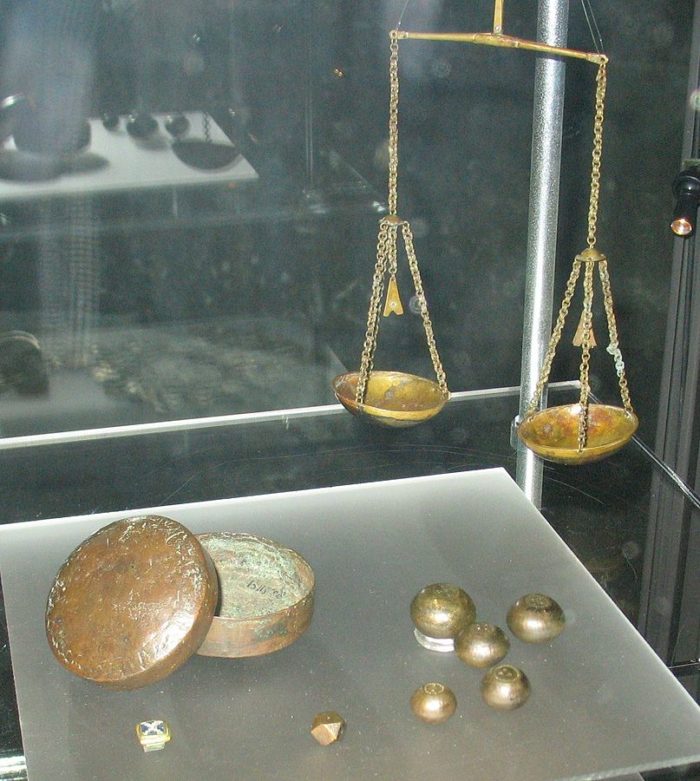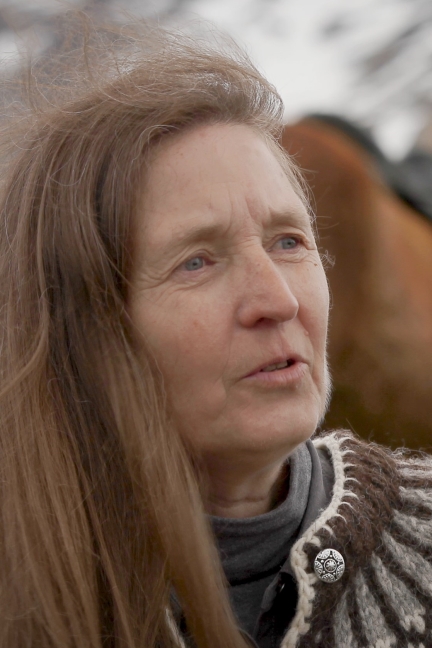by Nancy Marie Brown
In the following excerpt from The Real Valkyrie, Nancy Marie Brown provides an in-depth look at the Viking economy in Norway’s first true town, a system heavily based on pillaging, enslaving, and trading.

This file is licensed under the Creative Commons Attribution-Share Alike 3.0 Unported license.
Kaupang at Skiringssal was the first true town in what is now Norway. Earlier markets were held on any handy beach, or timed to coincide with rituals and assemblies. Traders were based on family farms, traveling in the slack time between sowing and harvest. Artisans worked on chieftains’ estates, where their silver, steel, ivory, and other valuable supplies were safe.
Protection did not presume total control. Artisans prized their independence, as the story of Volund shows. An elf, Volund was “the finest craftsman of anyone in the ancient sagas,” explains the poem Volund’s Song. He was married to a valkyrie named Hervor the Wise (not Angantyr’s daughter), who could transform herself into a swan. After nine years of marriage, this Hervor flew away to take part in a battle, leaving Volund at home to work gold and jewels into rings to please her when she returned home. But when an evil king learned the artisan was no longer protected by his valkyrie wife, he captured him. He slit Volund’s hamstrings so he could not leave, but was forced to stay and craft treasures for the king. Volund’s vengeance was awful: He killed the king’s sons, turning their skulls into silver-footed drinking cups, then flew away on mechanical wings he had made.
At Kaupang, King Godfrid did not force artisans to stay in his towns. Instead, he offered them more independence than they had previously enjoyed. Traders, likewise, were freed of the necessity to farm. The king, or his representative in the Shining Hall, saw that the town was supplied with food from the countryside and protected from attack (for a price). Their connection was to the advantage of each—though not to the Yngling chieftains, who saw their ability to reward their “friends” with well-crafted and exotic gifts impaired.
Kaupang’s heaviest traffic, however, was in humans—as was true for most Viking towns. Slavery was a main driver of the Viking economy. Along with looting and pillaging, one purpose of a Viking raid was to capture people to sell into slavery. Anyone, if their luck failed, could become a slave. Rich or poor, male or female—but usually young and healthy—anyone could suddenly lose their freedom and find their status reduced to the lowest rank in society. The reverse was also true in the Viking world: Kings’ sons and daughters became slaves, but slaves also became kings or queens. Slaves were mistreated and looked down upon, but they were not considered subhuman. “Slave” was a role a person could fall into and, with luck, climb out of.
Trade—especially in this kind of slaving culture—requires trust. To acquire exotic goods means dealing with strangers, whose ideas of right or wrong might not be yours. Trade is essentially risky: Each side hopes to profit at the other’s expense; each side hopes not to be cheated. While a generous gift radiates goodwill, an easy sale invites suspicion: Buyer beware. Are the goods flawed? The coins counterfeit? (In Kaupang, as well as in Birka and Hedeby, archaeologists have found fake Arab dirhams, the silver tainted with baser metals.)
It was to reduce the risk of trade that Kaupang looked to the Shining Hall.
First, the merchants’ physical safety must be assured. In Vestfold’s clan-based society, strangers had few rights or protections except while in Kaupang, where the chieftain’s well-armed warriors policed the marketplace.
Second, the rules of trade must be made plain. In some Viking markets, the chieftain fixed commodity prices. In others, witnesses were required for all sales. Elsewhere deals were sealed with a handshake or a drink. No one knows Kaupang’s rules. But buyer and seller needed to be sure the same ones applied to both stranger and kin; to both Christians from Dorestad and pagans from the arctic north; to those who bartered goods for goods, those who paid with silver arm-rings, and those who paid with silver coins; and to those who weighed that silver with the old-style rounded weights, based ultimately on the weight of a barley grain, as well as to those who used the new-style eight-sided cubes, based on the standard weight of an Arab silver dirham.
Finally, those coins and weights and measures must be periodically checked for accuracy, and cheating punished.
Copyright © 2021 by Nancy Marie Brown.
Nancy Marie Brown is the author of highly praised books of nonfiction, including Song of the Vikings and Ivory Vikings. They have been favorably reviewed in The New Yorker, The New York Times, The Economist, The Times Literary Supplement, The Wall Street Journal, and many other publications. Brown has spent decades studying Icelandic literature and culture. She lives on a farm in Vermont where she keeps four Icelandic horses and an Icelandic sheepdog.


